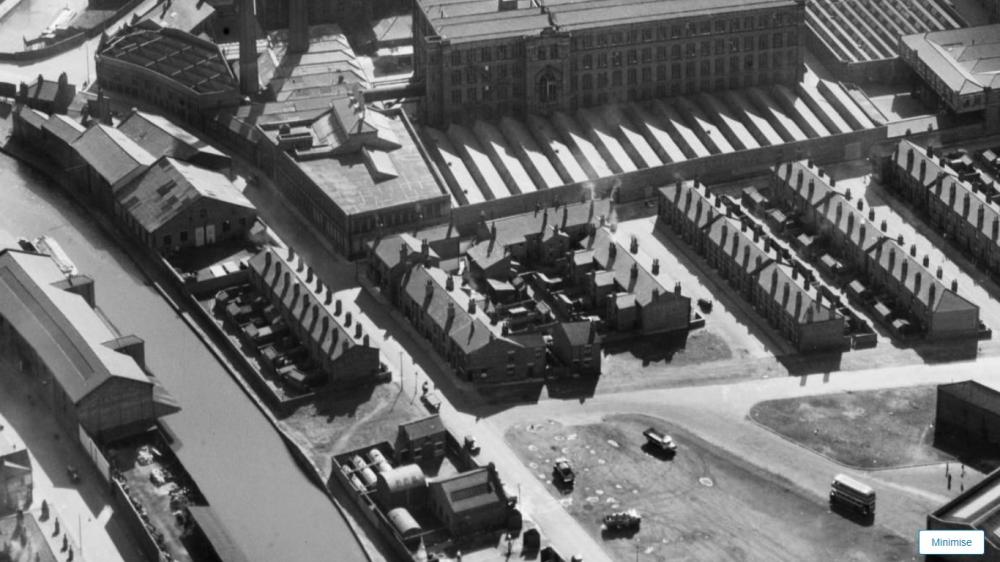Wigan Album
Pottery Road
7 Comments
Photo: Phil Taylor
Item #: 34370
A pity the location of the 69 pumps around Britain isn't mentioned on the website, link below, then it would shed some light on this mystery building, why would a retailer of petrol be down what was at one time almost a cul-de-sac? the majority of traffic going down there would have been buses going to the bus depot.
https://www.bp.com/en/global/corporate/who-we-are/our-history/through-world-war-two.html
Cyril, This oil site was not a petrol station. The steel tanks would have
held various types of lubricating oil for local factories & filling stations
and car workshop garages. Cheers, Ray.
Ray, thanks for that, but, on other photos of the same building folks have been insisting it was a petrol station - even saying it was the first one to open in Wigan. Initially Ron took a photo of the building inscription and it said BP & Co Ltd 1920 and he wanted any info about it, it's since been a can of worms. If you or someone you know has a time machine and can go back to 1920 to find who had the building constructed, and for what, and what company the initials BP stood for. Cheers Cyril.
In 1990 the Pottery Oil and Grease Co occupied the site where the terraced houses are above the gap, which was Bankses Pier head. The site bottom centre was Pottery yard, so the oil company jumped over Bankses Pier into Pottery yard and built a new building marked BP Co Ltd. in 1920.
Brilliant photos Phil, but I also was affected by all the Bs and Ps.
wiganworld.. Wigan's own Wikipedia. I wonder is it just me that noticed the BP stonework and wondered what it was? Even the BP archivist got it wrong<g>
Banks Pottery would not surprise me. Address Banks Pier.
Banks of Winstanley Hall, Meyrick Street opposite, named after Meyrick Banks, Letterewe Street, their estate in Ross Scotland, Pottery Street ?. There are 30 years between Phils photos and this building so as Cyril said "a can of worms".
Cyril, the British Pathe film is almost like a time machine and hopefully puts a lid on the can of worms and concludes that the BP on the stonework does indeed stand for British Petroleum.